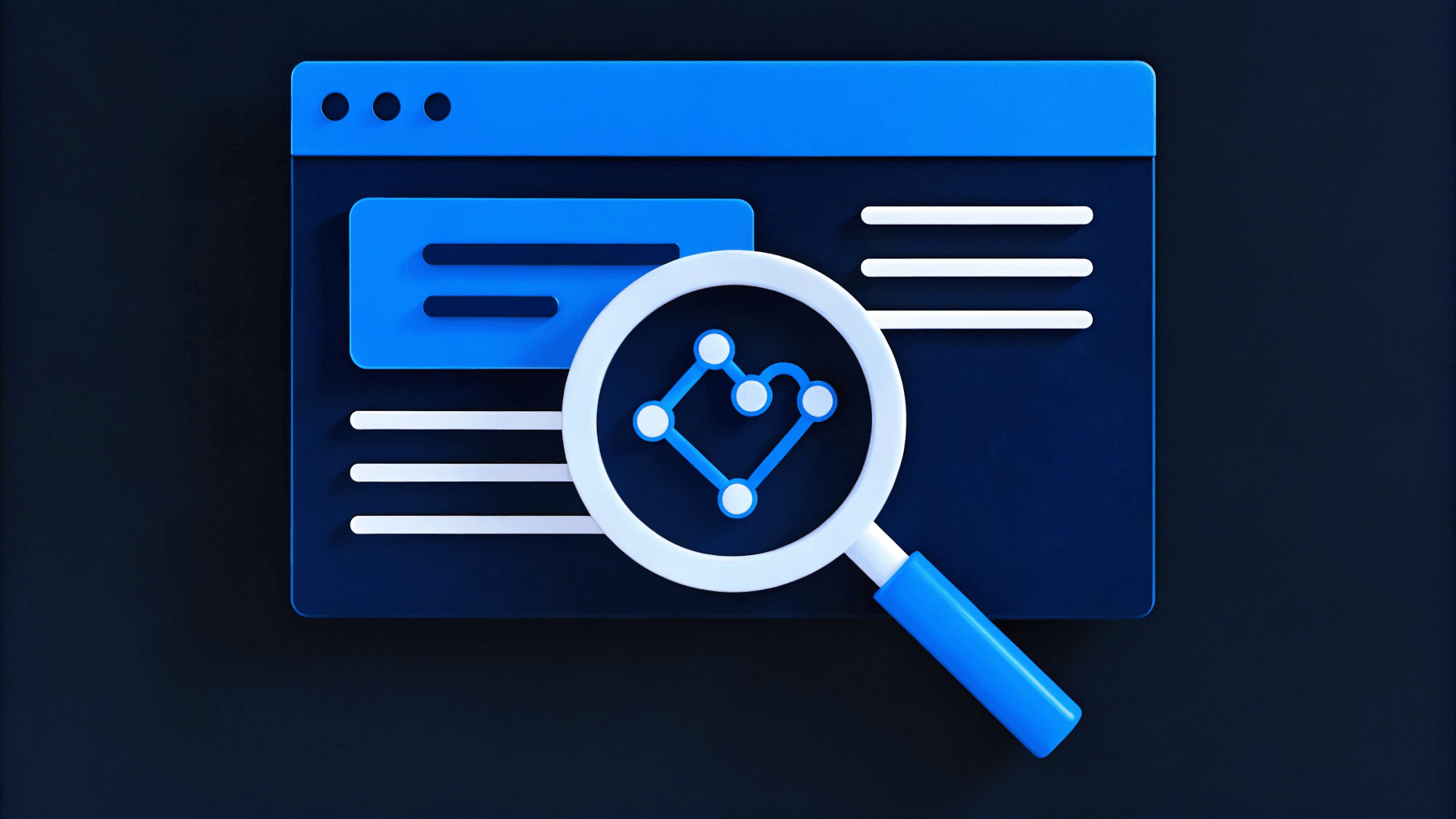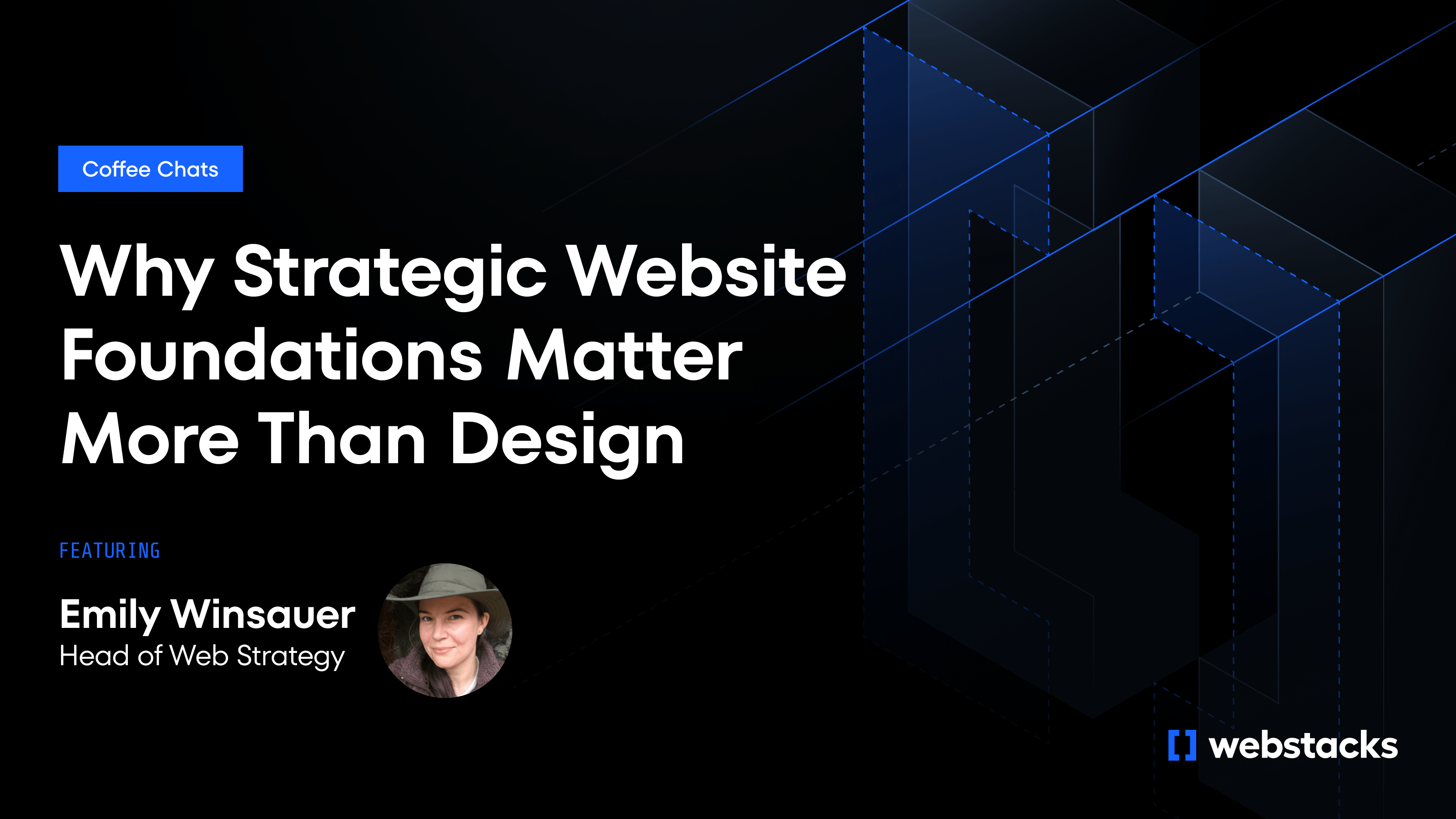Your website is the engine that powers your entire growth strategy, yet most companies treat it like a one-time project rather than a living product that needs to evolve with their business. This fundamental misunderstanding leads to websites that become bottlenecks instead of accelerators, forcing expensive rebuilds every few years and missing countless opportunities for growth.
The reality is that your business priorities shift dramatically as you scale. A $1M ARR startup focused on proving viability has completely different needs than a $10M company scaling demand generation or a $50M+ enterprise managing operational complexity. As your business goals evolve, so must your website strategy, technical architecture, and success metrics.
The companies that recognize this alignment between business stage and web strategy consistently outperform those that don't. They avoid over-engineering in the early days while preventing technical debt that cripples growth later. Most importantly, they treat their website as a product that evolves with their business needs rather than a static marketing asset.
This framework helps you match your website investment to your actual business priorities, ensuring your digital presence accelerates rather than constrains your growth.

Stage 1: Proving Viability ($0-5M ARR)
Primary Business Goal: Establish market credibility and validate product-market fit
In the early stage, your website has one critical job: prove that you're a legitimate company worth engaging with. Potential customers, investors, and early employees make snap judgments about your viability based on your digital presence. You don't need to win design awards, but you must clearly communicate what you do, how it works, and why it matters.
The Viability Challenge
Early-stage companies face a unique hurdle: building trust without extensive case studies, testimonials, or proof points. Your website becomes your primary credibility-building tool in a crowded market. High-performing startups focus on clarity over cleverness, answering fundamental questions immediately: What problem do you solve? How does your solution work? Who is it for? How can I try it?
Case Study: HeyGen's Foundation for Growth
HeyGen perfectly illustrates the early-stage viability challenge. When scaling from $0 to $1M ARR in just seven months, the company discovered that its existing website was actively hindering growth prospects. Potential customers couldn't quickly understand the value proposition, and the site failed to convert skeptical visitors into engaged prospects.
HeyGen partnered with Webstacks to rebuild their website from the ground up in 60 days, focusing on a modular, scalable Webflow foundation that clearly communicated their AI video generation capabilities. The result: a website that supported their climb to #1 on G2's Fastest Growing Products by establishing immediate credibility with first-time visitors while providing the flexibility to iterate on messaging as they refined product-market fit.
Implementation Strategy
Focus your efforts on metrics that directly impact business outcomes and tactical priorities that move those metrics. Start with must-do initiatives before considering enhancements.
Success Metrics That Matter:
- Bounce rate below 60% (indicates messaging resonates immediately)
- Demo requests from organic traffic (proves you convert skeptics beyond your network)
- Time-to-launch under 4 weeks (enables rapid iteration on user feedback)
Must-Do Tactical Priorities:
- Set Decision-Driving Goals: Target specific outcomes like "30 demo requests in 30 days" rather than vague objectives like "increase brand awareness"
- Map Lean Information Architecture: Focus on essential pages only—clear hero section, concise solution explanation, minimal social proof, prominent call-to-action
- Implement SEO Fundamentals: Set up Google Analytics 4, Google Search Console, and basic schema markup before launch
- Choose a Fast-Moving CMS: Tools like Webflow or HubSpot Starter enable non-technical teams to iterate without developer cycles
Nice-to-Have Enhancements:
- Weekly customer interview program to refine messaging
- Simple A/B tests on hero copy and call-to-action placement
- Basic lead scoring in your CRM
Technology Stack: Low-code CMS (Webflow, HubSpot Starter) with integrated analytics
Transition Indicators
You're ready for Stage 2 when you achieve consistent month-over-month traffic growth, generate predictable demo requests from organic sources, maintain bounce rates below 60%, and your team needs to launch campaigns faster than your current setup allows.

Stage 2: Scaling Demand Generation ($5-25M ARR)
Primary Business Goal: Optimize conversion performance and expand market reach
Once you've achieved product-market fit with consistent traffic growth, your website's role shifts from proving viability to driving qualified pipeline at scale. This stage focuses on optimization—improving conversion rates, scaling content production, and building systems that support predictable growth.
The Performance Imperative
At this stage, small improvements compound into significant business impact. A 1% conversion rate increase on a site with 10,000 monthly visitors and a 2% baseline can generate 10+ additional leads monthly. A 0.5-second page speed improvement can boost conversions by 7-12%. The challenge is that growth-stage companies often have more stakeholders, complex buyer journeys, and pressure to move fast—which can create technical debt and diluted messaging.
Case Study: Solana's Scalable Content Operations
Solana Foundation's transformation exemplifies growth-stage optimization challenges. As their ecosystem expanded rapidly, multiple teams contributed to website development without coordination, creating a "Frankenstein" effect: inconsistent design styles, competing content structures, and an outdated CMS that required developer involvement for basic updates.
By migrating to Builder.io and implementing a unified design system, Solana's teams can now publish pages independently, manage content through intuitive interfaces, and scale production for news, case studies, and technical documentation. This infrastructure enabled them to optimize performance while dramatically increasing content velocity—exactly what growth-stage companies need to capture expanding market opportunities.
Implementation Strategy
Here's how to execute this stage effectively: track the right metrics, prioritize high-impact initiatives, and build systematically toward your next growth phase.
Success Metrics That Matter:
- Largest Contentful Paint under 1.8 seconds (Google Core Web Vitals threshold)
- Quarter-over-quarter conversion rate improvement (focus on trends, not obsolete numbers)
- Organic traffic growth exceeding 15% quarterly (indicates content strategy success)
Must-Do Tactical Priorities:
- Run Systematic CRO Sprints: Two-week cycles analyzing user behavior, forming hypotheses, testing variations, and implementing winners
- Build Revenue Attribution: Connect website interactions to CRM data, tracking the full buyer journey rather than just page views
- Create Topic Cluster Content: Develop comprehensive content that answers buyer questions throughout their journey—pillar pages for broad topics, supporting content for specific pain points
- Implement Modular Design Systems: Use CMS components that maintain brand consistency while accelerating page creation
Nice-to-Have Enhancements:
- Advanced personalization based on traffic source or company size
- Marketing automation workflows triggered by website behavior
- Sophisticated A/B testing platform integration
Technology Stack: Hybrid or headless CMS with design system, CDN, advanced analytics
Transition Indicators
You're ready for Stage 3 when content operations outgrow current systems, multiple teams request simultaneous site updates, performance degrades from accumulated scripts and integrations, and stakeholders demand sophisticated experiences like personalization or complex third-party integrations.
Stage 3: Managing Complexity ($25M+ ARR)
Primary Business Goal: Maintain performance and consistency while enabling team autonomy
At the enterprise stage, your website becomes a complex system supporting multiple teams, use cases, and customer segments. The challenge shifts from optimization to orchestration—maintaining performance, security, and brand consistency while enabling dozens of contributors to work efficiently in parallel.
The Governance Challenge
Enterprise websites must balance flexibility with control. Marketing teams need campaign launch speed, sales requires updated collateral access, product teams want feature showcase capabilities, and customer success demands self-service resource hubs. Without proper governance, these competing needs create operational chaos: slow-loading sites, broken user experiences, and inconsistent messaging that confuses customers and erodes trust.
Case Study: Calendly's Enterprise Transformation
Calendly's evolution from product-led growth (PLG) to enterprise sales demonstrates enterprise-stage orchestration perfectly. After eight years serving 10+ million users through PLG motion, Calendly needed to pivot its entire go-to-market strategy to capture enterprise demand effectively.
This transformation required coordinating changes across product capabilities, marketing messaging, sales processes, and brand identity. The website became the central orchestration point, requiring complete content architecture restructuring, new enterprise-focused solution pages, sophisticated pricing presentation, and integration with tools like FullStory, Optimizely, and 6Sense. Success demanded the kind of complex, multi-team coordination that defines enterprise-stage website management.
Implementation Strategy
Success Metrics That Matter:
- Site uptime above 99.9% (enterprise sites support multiple revenue streams)
- Google Lighthouse performance scores above 90 (maintains user experience at scale)
- Author satisfaction and deployment frequency (measures team velocity and system usability)
Must-Do Tactical Priorities:
- Implement Tiered Governance: Clear roles, permissions, and approval workflows that balance speed with control
- Centralize Design Systems: Unified components and guidelines while allowing team autonomy within defined parameters
- Plan Phased CMS Migrations: Audit existing content, implement careful redirects, and protect SEO equity during transitions
- Adopt Composable Architecture: API-first services and micro-frontends that limit update blast radius and enable parallel team work
Nice-to-Have Enhancements:
- Advanced personalization engines
- Sophisticated marketing automation integration
- Real-time content performance dashboards
Technology Stack: Headless CMS, composable services stack, enterprise CDN, comprehensive monitoring
The Composable Advantage
A well-governed, composable platform enables your site to evolve without disruption. Teams work in parallel on different initiatives without conflicts. Launches happen predictably because processes are established and reliable. Stakeholders trust the system because it consistently delivers results without breaking existing functionality.
Making the Framework Work for Your Business
This framework provides guidance, not rigid rules. Companies often span multiple stages simultaneously or have unique needs based on industry, business model, or technical constraints. The key is using data to prioritize effectively.
If your page load time exceeds two seconds, focus on performance regardless of your current stage. If teams can't safely launch new pages, governance becomes your priority. If bounce rates exceed 60%, messaging clarity should be your first concern.
Market leaders treat their website as a product, not a project. They invest in continuous feedback loops, modular design systems, and clear ownership structures. They measure outcomes that matter to business goals and iterate based on real user data. Most importantly, they align web strategy with business objectives rather than chasing industry trends or competitor features.
This approach reduces the risk of expensive emergency rebuilds, improves cross-team collaboration, and enables faster execution as your business scales. Your website becomes a growth accelerator rather than an operational bottleneck.
Don't Let Your Website Constrain Your Growth
The companies featured in this analysis—HeyGen, Solana, and Calendly—share a common strategic insight: they recognized that website strategy must evolve with business needs, not work against them. Each made calculated investments in the right foundation at the right time, resulting in accelerated growth, improved team velocity, and websites that became competitive advantages rather than operational burdens.
The cost of misalignment is higher than most companies realize. We regularly encounter businesses that delayed website strategy evolution too long, resulting in expensive emergency rebuilds, missed market opportunities, and teams trapped maintaining technical debt instead of driving growth. High-performing organizations align web strategy with business stage and build with future needs in mind.
Ready to accelerate your growth with the right website strategy?
Schedule a Strategy Call — Get a tailored roadmap and budget guidance for your specific stage and goals. We'll audit your current site, identify the highest-impact improvements, and create a plan that aligns with your business objectives.
Download the Website Strategy Playbook — Access detailed checklists, templates, and internal audit guides to implement this framework with your team.
The right strategy, implemented at the right time, transforms your website from a cost center into your most powerful growth engine.




